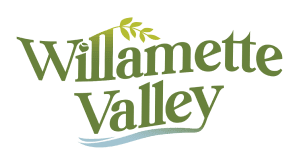


Just an hour from Salem, the Molalla River Recreation Area is a below-the-radar destination for wilderness adventures. The Molalla River, designated a Wild and Scenic River by the U.S. Forest Service, is the largest undammed tributary of the Willamette River. This wooded gorge has a rich history as a traditional path taken by the indigenous Molalla people to access huckleberry picking grounds near Table Rock, and as the site of a gold rush in 1860.
Today, the riches of the area are measured in recreational activities. It's still recovering from the 2020 Beachie Creek Fire, so the upper sections are currently closed through November 1, 2021. However, the first few miles of this beautiful canyon are open, including a network of trails that welcomes equestrians and mountain bikers as well as hikers. The Bureau of Land Management (BLM) plans to open the South Fork Molalla Road, currently closed at the Ivor Davies Wayside, by November 1, allowing visitor access to the upper regions of the Molalla River and the dramatic Table Rock Wilderness.

The Molalla River Corridor offers plenty of year-round outdoor activities. Photo by Bureau of Land Management Oregon and Washington/Flickr
Visitors are drawn by the untamed character of the land. The road flanks the river, where turbulent whitewater alternates with pools and swimming holes. "It's got really crystal clear water in the summertime that's kind of emerald-colored," says John Huston, field manager for the Cascades Resource Area. Striking basalt formations form the backbone of the geology here, concealed by verdant forests of mostly secondary and some old-growth forest dominated by Douglas fir, cedar, hemlock, maple and alder. One distinctive geological feature is called The Eye of the Molalla, or rosette basalt-an unusual occurrence of concentric basalt columns lying sideways instead of vertically. It gazes over the river just upstream of the intersection with Shotgun Creek.
The area is designated as multi-use for non-motorized recreation, so hikers won't have to face off with ATVs. However, be prepared to encounter people on horseback or mountain bikes. There is currently no day-use fee or forest pass required, and the campgrounds along the Molalla River are first-come, first served-so the area's not only remote and underutilized, it's a great destination for the spontaneous camper.
Here's how to enjoy the top five recreational activities on the Molalla River Corridor.

"Mountain bikers are our primary demographic," says David Moore, outdoor recreation planner with the BLM. "It's one of the most successful multiple-use trail networks I've ever seen. Molalla River Watch, our partner group, is comprised of all three user groups (hikers, bikers, and equestrians), which is really extremely rare. They have volunteer trail work days where they come out together and work on the trails and everything else." He recommends Trailforks, a peer-generated resource for trail maps, along with bike-centric data, that shows how much a trail climbs or descends. Over 20 miles of trails consist of single-track and dirt roads. The single-track trails are marked seasonal and are closed seasonally between October 15 and April 15, and when they are muddy.
Dozens of miles of trails crisscross the Molalla River Recreation Area. Photo by Bureau of Land Management Oregon and Washington/Flickr
The Hardy Creek Trailhead is popular among the local trail riding community, with ample space to park horse trailers. Equestrian visitors share the same network of trails and forest roads used by cyclists and hikers. Single-track trails are closed seasonally between October 15 and April 15, and when they are muddy. Bikers and hikers should remember that horses have the right-of-way on trails and roads.

Moore recommends starting at the Hardy Creek trailhead and ascending the Hardy Creek Trail to the Rim Trail and following it south, where they'll find four different ways to head downhill to connect with the northbound Huckleberry Trail and return to their cars. Hikers can also avoid horse trailer congestion by starting at the three lower trailheads: Amanda's, Americorps, and Sandquist's.
Once the area fully opens in November 2021, hikers can climb to the Table Rock summit at 4,881 foot elevation. Clear days reward hikers with stunning views into Eastern Oregon and a panorama of volcanoes. Mt. Jefferson is "right there," according to Moore, sharing the view with Mt. Hood, Mt. Bachelor and the Three Sisters. On exceptional days, the views extend from Mt. Rainier and Mt. St. Helen to Mt. Shasta. The steep, rugged slopes of Table Rock have discouraged logging, so the trail passes through old-growth forest. The area is known as an ecological island, hosting plant life that is otherwise unique to the eastern Cascades along with at least two endangered plants.
The final ascent toward the summit of Table Rock (due to reopen in November 2021) follows an exposed ridge and affords views of nearby Cascade peaks.

There are two walk-in campgrounds in the Molalla River Corridor: Three Bears Recreation Site (with 15 campsites) and Cedar Grove Recreation Site (with 11 campsites). These are great options for spontaneous camping trips because they are exclusively first-come, first served. Campers park in a central parking lot and carry their gear on paths to campsites, each equipped with a tent pad, metal fire ring, barbecue grates, and picnic table. Both campgrounds have vault toilets, running water, and river access-and are free of charge. Pack out all refuse, and note that firewood collecting is not permitted.
The Molalla River Corridor is home to a pair of walk-in campgrounds. Photo by Bureau of Land Management Oregon and Washington/Flickr

"The river's got about four or five different sections that are boatable in both kayaks and rafts," says Pete Giordano of Blue Sky Rafting. "The geology is outstanding. Several sections have exposed basalt flows that are really defined and very pretty and dramatic. And the corridor has nice big trees and very clean, clear water. It's a really special place." As an undammed river, it's challenging for commercial vendors to schedule excursions, but wintertime and early spring are the best time to run it. For independent outings, Giordano recommends the river for strong intermediate boaters, and urges boaters to do advance research before hitting the water. Because the road parallels the river, it's easy to scout the conditions.
In addition, the Molalla River Corridor draws anglers casting for steelhead and salmon, birdwatchers, road bikers and gold-panners. It also has several popular swimming holes at day use sites 2, 4, and 11.
A handful of sections of the Molalla River can be paddled in kayaks and rafts. Photo by Bureau of Land Management Oregon and Washington/Flickr